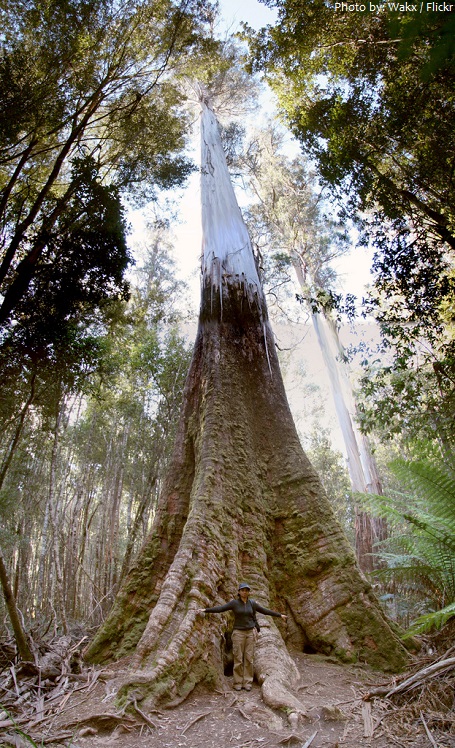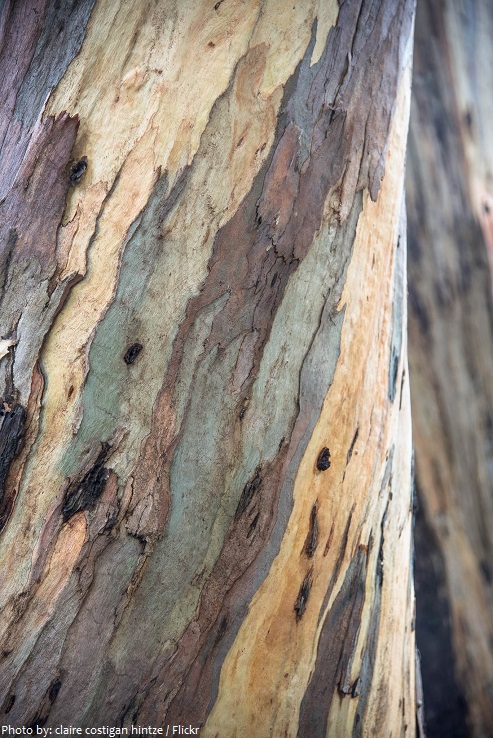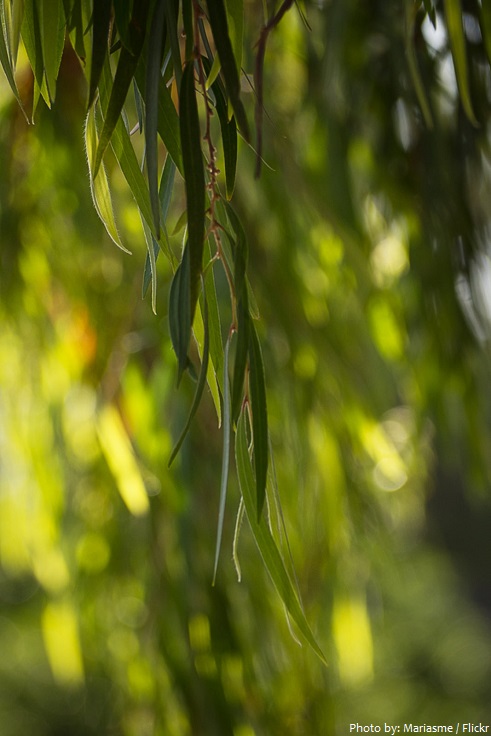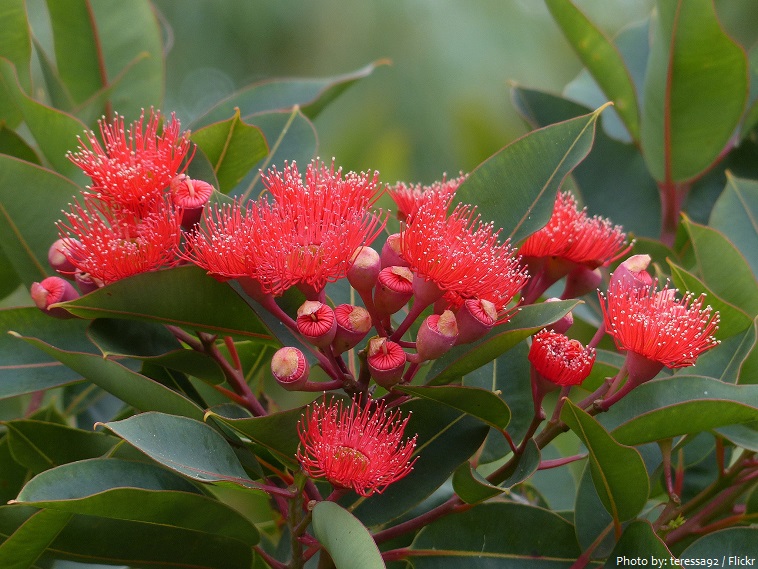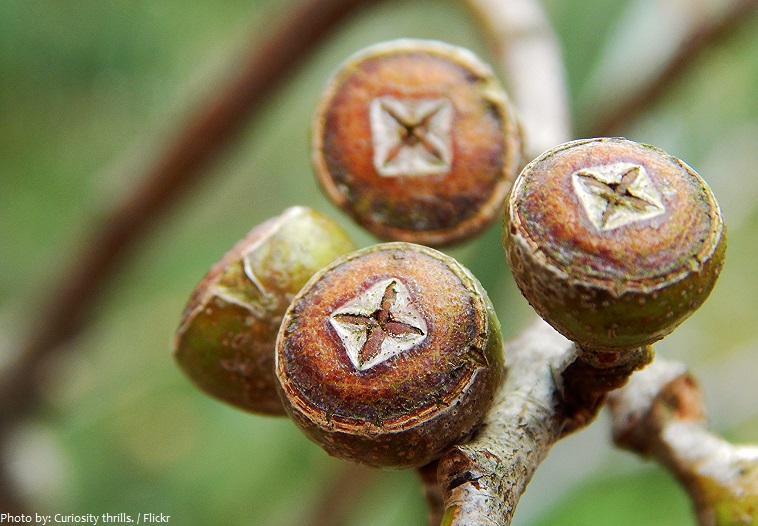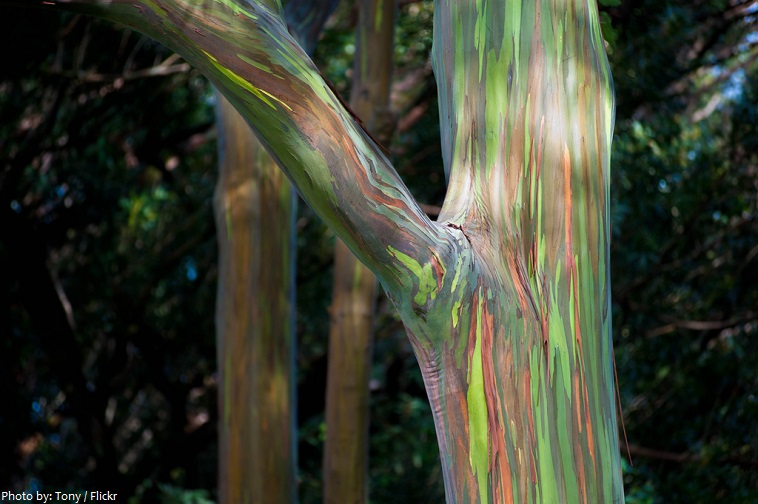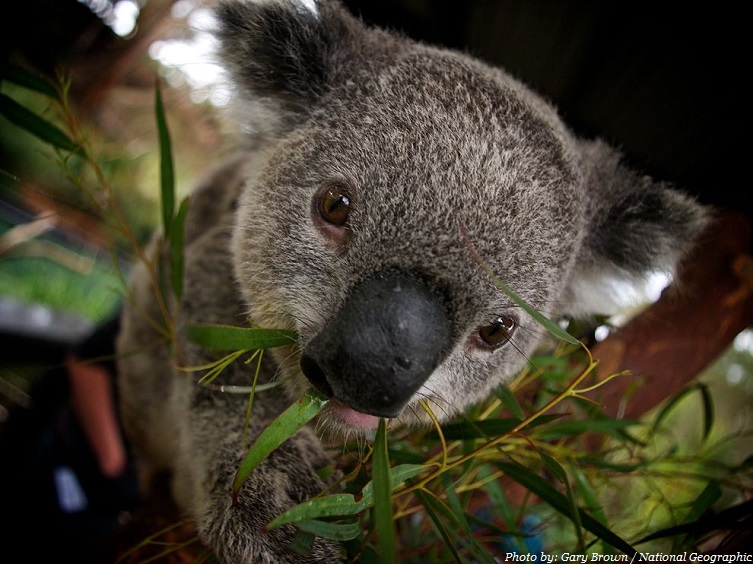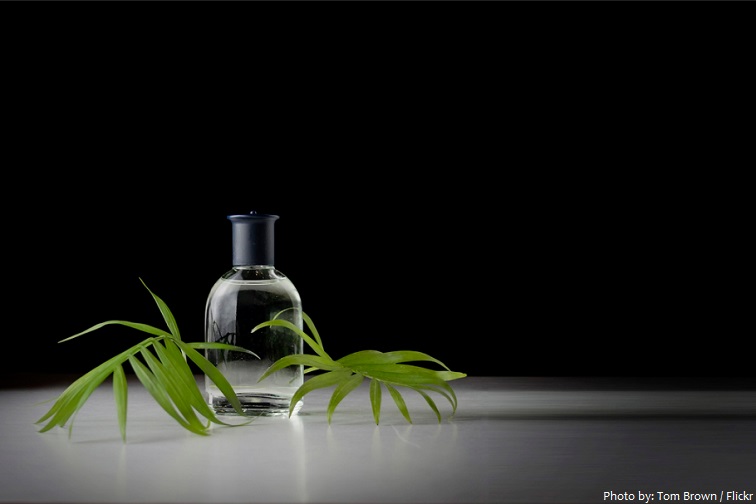Eucalyptus is a diverse genus of flowering trees and shrubs.
There are more than 700 species of eucalyptus.
Most species are native to Australia, with a very small number of native species found in parts of adjacent New Guinea and Indonesia and one as far away as the Philippines.
Nearly all eucalyptus are evergreen, but some tropical species lose their leaves at the end of the dry season.
A mature eucalyptus range form of a low shrub to a very large tree.
Tree can be divided into four size categories:
• Small: to 10 meters (33 feet) in height
• Medium-sized: 10–30 meters (33–98 feet)
• Tall: 30–60 meters (98–197 feet)
• Very tall: over 60 meters (200 feet)
Eucalyptus regnans, the Australian ‘mountain ash‘, is the tallest of all flowering plants ; today, the tallest measured specimen named Centurion is 99.6 meters (327 feet) tall.
Six other eucalypt species exceed 80 meters in height.
The appearance of eucalyptus bark varies with the age of the plant, the manner of bark shed, the length of the bark fibres, the degree of furrowing, the thickness, the hardness, and the colour. All
mature eucalypts put on an annual layer of bark, which contributes to the increasing diameter of the stems.
The leaves on a mature eucalyptus plant are commonly lanceolate, petiolate, apparently alternate and waxy or glossy green. In all except a few species, the leaves form in pairs on opposite sides of a square stem, consecutive pairs being at right angles to each other.
The most readily recognisable characteristics of eucalyptus species are the distinctive flowers and fruit.
Flowers have numerous fluffy stamens which may be white, cream, yellow, pink, or red; in bud, the stamens are enclosed in a cap known as an operculum which is composed of the fused sepals or petals, or both. Thus, flowers have no petals, but instead decorate themselves with the many showy stamens. As the stamens expand, the operculum is forced off, splitting away from the cup-like base of the flower; this is one of the features that unites the genus.
The name Eucalyptus, from the Greek words eu-, well, and kaluptos, cover, meaning “well-covered”, describes the operculum. The woody fruits or capsules are roughly cone-shaped and have valves at the end which open to release the seeds, which are waxy, rod-shaped, about 1 mm in length, and yellow-brown in color.
Australia is covered by 92,000,000 hectares (227,336,951 acres) of eucalypt forest, comprising three quarters of the area covered by native forest.
Many species, though by no means all, are known as gum trees because they exude copious kino from any break in the bark.
Eucalyptus deglupta, commonly known as the rainbow eucalyptus is a tall and most beautiful tree. The unique multi-hued bark is the most distinctive feature of the tree. Patches of outer bark are shed annually at different times, showing a bright green inner bark. This then darkens and matures to give blue, purple, orange and then maroon tones.
Eucalypts have been planted in some places around the world to dry up swamps, which happens because of their great consumption of water.
On warm days, eucalyptus forests are sometimes shrouded in a smog-like mist of vaporised volatile organic compounds; the Australian Blue Mountains take their name from the haze.
Most eucalypts are not tolerant of severe cold. Whilst in a wide range of climates mild frost is experienced by eucalypts, they in general only tolerate light frosts down to −5 °C (23 °F).
Koalas, Greater Gliders and Ringtail Possums, are only mammals which can survive on a diet of eucalyptus leaves. Eucalyptus leaves are very fibrous and low in nutrition, and to most animals are extremely poisonous.
The toxins are thought to be produced by the trees as a protection against leaf-eating animals like insects.
Eucalyptus flowers produce a great abundance of nectar, providing food for many pollinators including insects, birds, bats and possums.
The nectar of some eucalypts produces high-quality monofloral honey.
Eucalyptus oil has a history of wide application, as a pharmaceutical, antiseptic, repellent, flavouring, fragrance and industrial uses.
An essential oil extracted from eucalyptus leaves contains compounds that are powerful natural disinfectants and can be toxic in large quantities.
Eucalyptus leaves and oil have been used for generations as a cure-all for respiratory issues, particularly in removing catarrh from the respiratory tracts.
Eucalyptus oil is highly flammable (ignited trees have been known to explode); bushfires can travel easily through the oil-rich air of the tree crowns.
Eucalyptus is the most common short fibre source for pulpwood to make pulp.
Eucalypt wood is also commonly used to make didgeridoos, a traditional Australian Aboriginal wind instrument.
Eucalyptus was introduced from Australia to the rest of the world following the Cook expedition in 1770.
Today, eucalyptus is commercially grown in tropical and subtropical areas all over the world.
Eucalypts are being grown on plantations in many countries including the United States, Brazil, Morocco, Portugal, South Africa, Israel, and Spain.
The oldest definitive Eucalyptus fossils are surprisingly from South America, where eucalypts are no longer endemic. The fossils are from the early Eocene (51.9 million years ago), and were found in the Laguna del Hunco deposit in Chubut province in Argentina.

